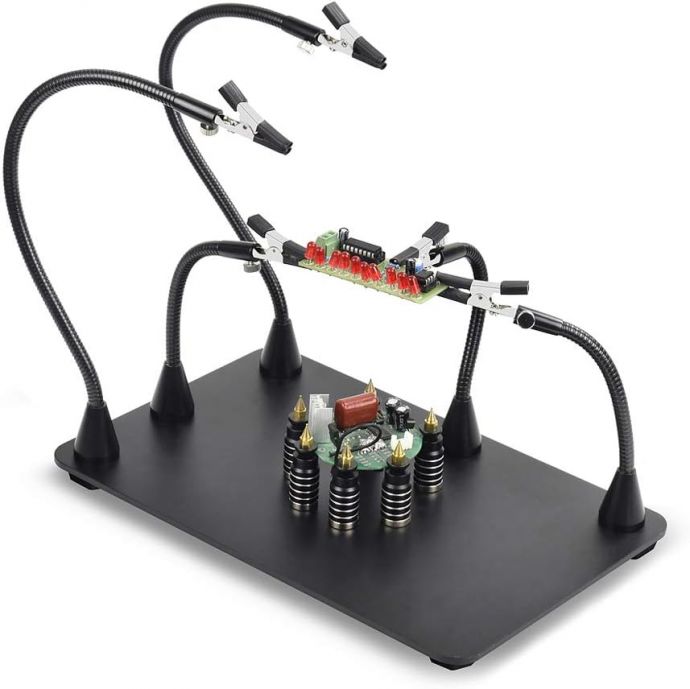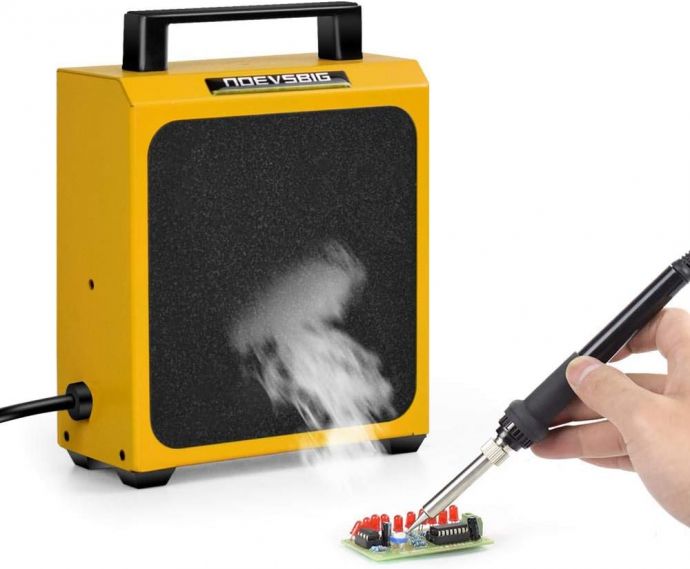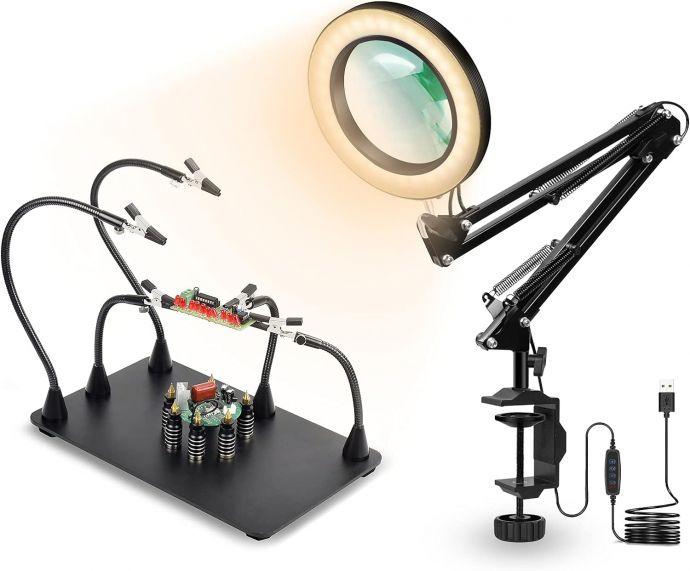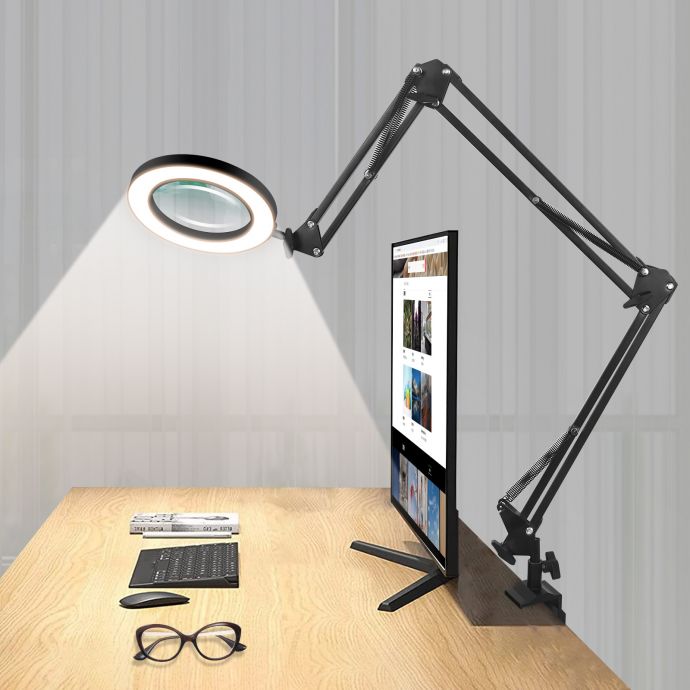Mastering the art of soldering can be a transformative skill for hobbyists and professionals alike, offering the ability to breathe life into electronic projects and repairs. However, achieving precise, flawless solder joints requires a steady hand, a keen eye, and the right tools. Among these, the 3X Magnified Magnetic Helping Hands Third Hand Tool emerges as an indispensable asset, cleverly designed to elevate your craftsmanship by providing stability, magnification, and flexibility.
**Understanding Soldering: The Basics**

Soldering is the process of joining two or more metal components by melting solder around the connection, creating an electrically conductive and mechanically robust bond. Essential in electronics and jewelry making, it demands a delicate balance of temperature control, precision, and timing.
Before diving into advanced techniques, one must understand the fundamental components of soldering: the soldering iron, solder, and flux. The soldering iron is the tool used to melt the solder, often adjustable in temperature to suit different projects. Solder is the metal alloy that melts and solidifies to create the bond, while flux is a chemical cleaning agent that removes oxidation from metal surfaces, ensuring a clean solder joint.
**The Role of a Helping Hand Tool in Soldering**

One of the most common challenges in soldering is stabilizing the components being soldered. This is where the 3X Magnified Magnetic Helping Hands Third Hand Tool shines. Its design holds your workpieces in place, allowing for hands-free manipulation, reducing the strain on your hands and increasing accuracy.
This tool typically features adjustable arms with alligator clips, a magnifying glass, and a heavy base. The alligator clips hold the components securely, while the magnifying glass offers enhanced visibility of the intricate details of your work, crucial for precision soldering.
**Advantages of the 3X Magnified Magnetic Helping Hands Third Hand Tool**

1. **Enhanced Precision and Stability:** The tool's magnetic base provides a firm grip on metal surfaces, preventing unwanted movement during soldering. This stability is crucial for maintaining alignment and proper soldering angles, ensuring a clean and effective bond.
2. **Magnification Benefits:** The 3X magnification significantly improves visibility, allowing you to discern finer details and assess connections more clearly. This is particularly beneficial when working with microelectronics or delicate jewelry components.
3. **Versatility and Flexibility:** With adjustable arms, the tool can accommodate various component sizes and shapes, offering reliable support for a wide range of projects, from electronics to model making.

4. **Safety and Ergonomics:** By holding components securely, the tool reduces the risk of accidental burns and minimizes fatigue. This ergonomic advantage allows you to work comfortably for extended periods.
**Setting Up Your Workspace**
A well-organized workspace is the foundation of successful soldering. Begin by ensuring adequate lighting and ventilation to create a safe and efficient environment. Position the 3X Magnified Magnetic Helping Hands Third Hand Tool on a sturdy, heat-resistant surface within easy reach.

Organize your soldering kit, keeping the soldering iron, solder, flux, and cleaning sponge in designated areas. Consider using a fume extractor to manage any potentially hazardous fumes generated during the soldering process.
**Step-by-Step Guide to Soldering with the Helping Hands Tool**
1. **Preparation and Positioning:**

- Secure the components to be soldered with the alligator clips of the helping hand tool. Position them at an angle that allows comfortable access with the soldering iron.
- Clean the surfaces of the components to remove any oxidation, using flux if necessary.
2. **Preheating:**
- Turn on your soldering iron and allow it to reach the appropriate temperature. This varies depending on the solder type but typically falls between 350-400°C (662-752°F).

3. **Soldering Process:**
- Apply a small amount of solder to the tip of the iron to improve heat transfer, a technique known as "tinning."
- Bring the tip of the soldering iron into contact with the workpieces to heat them evenly.
- Introduce the solder to the joint, allowing it to melt and flow smoothly around the connection. Avoid applying the solder directly to the iron tip to prevent cold joints.
4. **Finalizing the Joint:**
- Once the solder flows evenly and forms a neat joint, remove the iron and allow the solder to cool naturally.
- Inspect the solder joint for reliability and firmness. A good joint should be shiny and smooth.
5. **Cleaning:**
- Clean the soldering iron tip with a wet sponge or brass wool to remove any residue, extending its lifespan and maintaining its efficiency.
**Common Mistakes and Troubleshooting Tips**
Even seasoned soldering enthusiasts can encounter issues. Here are some common problems and their solutions:
- **Cold Joints:** Caused by insufficient heating, resulting in a brittle and unreliable connection. Ensure both components are adequately heated before applying solder.
- **Bridging:** Occurs when excess solder creates shorts between connections. Use desoldering tools like wick or pumps to remove excess solder and separate connections.
- **Poor Heat Transfer:** If the joint is not forming well, check the cleanliness of the components and the condition of the iron tip. Tinning the tip and ensuring a clean work surface can improve heat transfer.
**Enhancing Your Skills**
Soldering, like any craft, improves with practice. Experiment with different types of solder and fluxes to understand their effects on your projects. Attend workshops or join communities of hobbyists and professionals to exchange tips and tricks, gaining insights into advanced techniques and applications.
**Conclusion**
The 3X Magnified Magnetic Helping Hands Third Hand Tool is an invaluable ally in the journey to mastering soldering. Its ability to provide stability, precision, and flexibility transforms ordinary soldering tasks into a seamless, enjoyable experience. By investing time in understanding your tools and refining your techniques, you can unleash your craftsmanship, tackling projects with confidence and achieving results that reflect your dedication and skill.
Whether you're a seasoned engineer or a curious hobbyist, embracing the full potential of this tool can elevate your soldering endeavors, paving the way for innovation and creativity in your future projects. With practice and patience, soldering becomes not just a task, but an art form where precision meets creativity in every connection.









